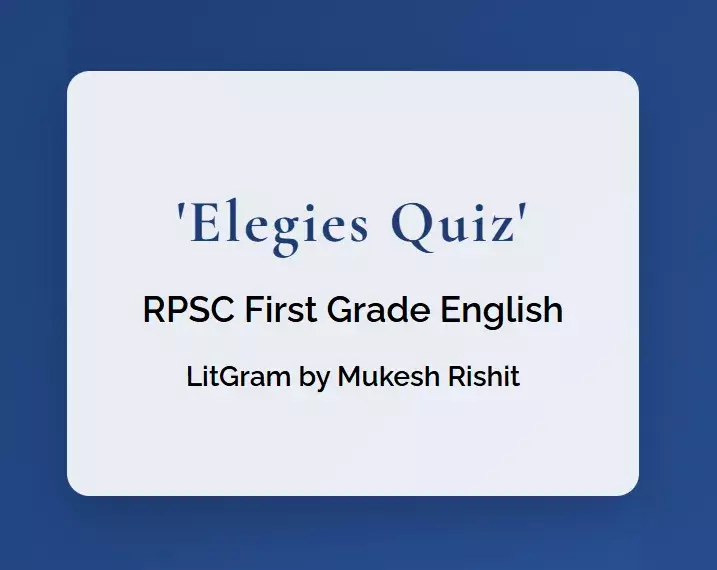Elegies Quiz
Elevate your RPSC First Grade English exam preparation with our comprehensive Elegies Quiz! Dive deep into the world of elegiac poetry, from ancient Greek and Latin verses to modern interpretations. This quiz is designed to test and enhance your knowledge of elegies, a crucial component of the RPSC First Grade English syllabus. Explore the nuances of pastoral elegies, elegiac couplets, and the evolution of this poetic form through literary history. Perfect for aspiring educators and literature enthusiasts, our Elegies Quiz covers key topics such as:
- Traditional and modern definitions of elegies
- Famous elegy writers and their works
- Structural elements of elegies, including meter and rhyme schemes
- Thematic progression in elegiac poetry
- Differences between various types of elegies
Boost your confidence and sharpen your literary analysis skills as you prepare for the RPSC First Grade English exam. Whether you’re studying classic works like Milton’s “Lycidas” or exploring contemporary elegies, this quiz is an essential tool for mastering this important poetic genre. Don’t miss this opportunity to enhance your understanding of elegies and improve your chances of success in the RPSC First Grade English exam!



2 Comments
Pingback: O Captain My Captain: The Hidden Story Behind Walt Whitman's Most Famous Poem LitGram by MukeshRishit
Pingback: Elegy Explained: How Poetry Helps Us Grieve and Remember